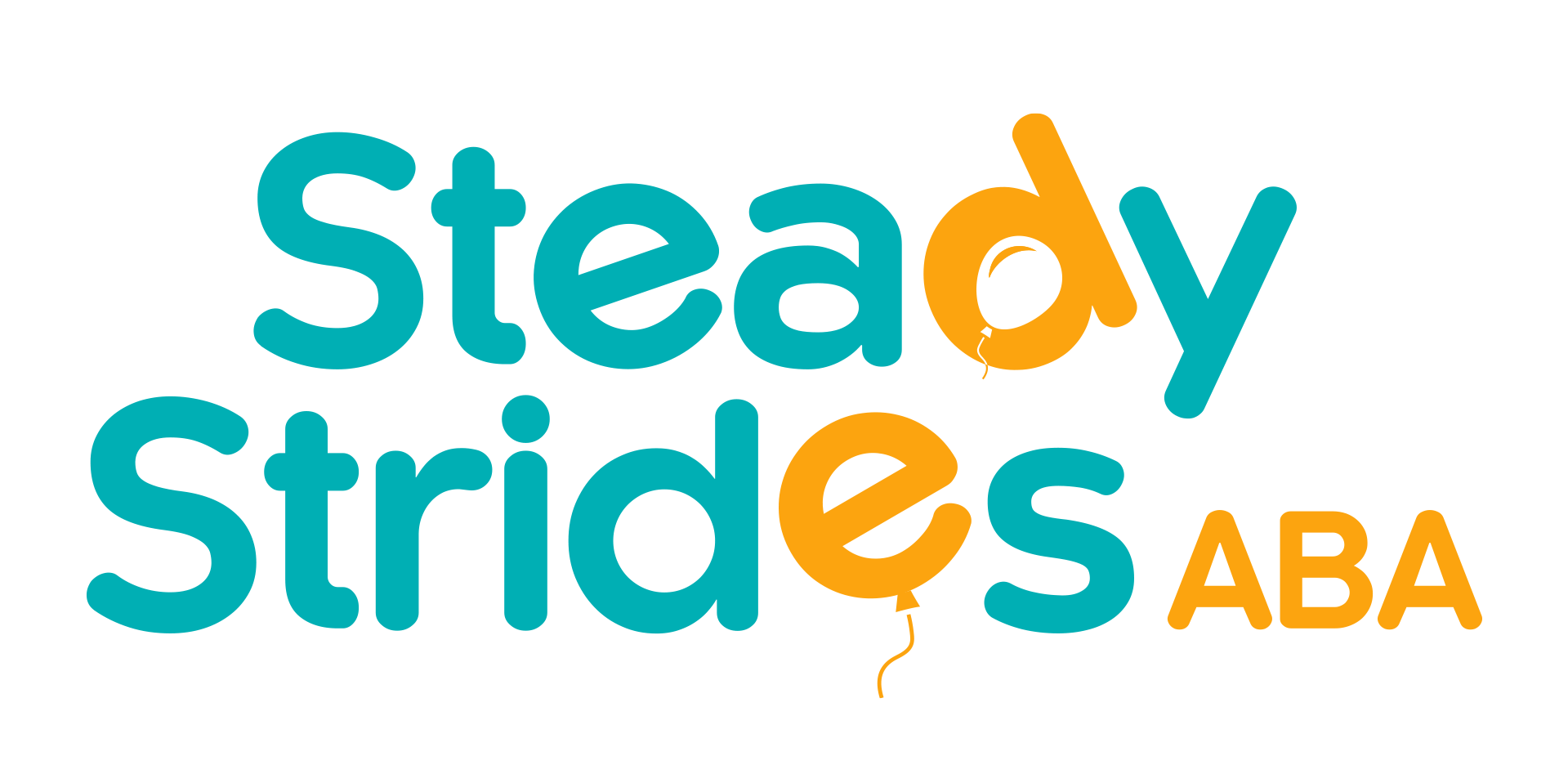Autism is a complex developmental disorder that affects individuals in different ways. It is characterized by difficulties in social communication and interaction, as well as repetitive behaviors and sensory sensitivities. Autism Spectrum Disorder (ASD) encompasses a range of conditions, including autistic disorder and Asperger syndrome. This blog aims to provide a comprehensive understanding of autism, from its symptoms and causes to the diagnostic process and available therapeutic avenues.
Understanding Autism Spectrum Disorder (ASD)
Autism Spectrum Disorder, or ASD, is a developmental disorder that affects the way individuals perceive and interact with the world around them. It is often referred to as a spectrum disorder because symptoms and behaviors can vary widely from person to person. Some individuals may have mild difficulties, while others may require more substantial support. ASD is a lifelong condition, but with the right interventions and support, individuals with autism can lead fulfilling lives.
Brief Overview of ASD
Autism Spectrum Disorder (ASD) is a pervasive developmental disorder that encompasses a wide range of symptoms and behaviors. It is characterized by challenges in social communication, social interaction, and restricted and repetitive behaviors. Individuals with ASD may have difficulty in understanding social cues, maintaining eye contact, and using facial expressions and tone of voice effectively. They may also exhibit repetitive behaviors such as hand flapping and engage in specific, narrow interests.
Symptoms of ASD typically emerge in early childhood, although they may be evident in infancy. Early detection and intervention are crucial in improving the quality of life for individuals with autism. By identifying the signs of ASD early on, parents, caregivers, and educators can provide the necessary support and interventions to help children with autism reach their full potential. It is important to note that each person with autism is unique, and symptoms can vary in severity and presentation.
The Spectrum Model
The spectrum model of autism emphasizes the diversity of the disorder and acknowledges that symptoms and behaviors can vary widely. Here are some key points about the spectrum model of ASD:
- Autism is a spectrum disorder, and individuals with autism may require different levels of support based on their unique needs.
- Asperger syndrome, a milder form of autism, is often included in the autism spectrum.
- Autism is a lifelong condition, and although symptoms may change over time, individuals with autism will typically continue to experience challenges related to social communication and interaction.
- The spectrum model promotes understanding, acceptance, and support for individuals with autism, recognizing their strengths and abilities rather than focusing solely on the difficulties they may face.
- Personalized interventions and support are essential in helping individuals with autism thrive and lead fulfilling lives.
Understanding the spectrum model of autism is crucial in providing appropriate support and interventions for individuals with autism. By recognizing the individuality of each person with autism, we can create a more inclusive and supportive society.
Recognizing the Symptoms of Autism
Recognizing the symptoms of autism is important in order to facilitate early intervention and appropriate support. While symptoms can vary, there are common challenges that individuals with autism may face in social communication and interaction, as well as in their behaviors and sensory sensitivities. It is important to distinguish autism symptoms from typical developmental milestones, as early detection and intervention can significantly improve outcomes for individuals with autism.
Social and Communication Challenges
Social communication and interaction can be challenging for individuals with autism. Here are some key social and communication challenges associated with autism:
- Difficulties in understanding social cues: Individuals with autism may have difficulty interpreting facial expressions, body language, and tone of voice, making it challenging for them to fully understand and respond appropriately in social situations.
- Impaired social skills: Difficulties in social skills, such as initiating and maintaining conversations, sharing interests, and understanding social norms, are common in people with autism. They may have a limited repertoire of social behaviors, which can make it difficult for them to form and maintain meaningful relationships.
- Language difficulties: Some individuals with autism may experience delays in language development, while others may have excellent language skills but struggle with using language in social situations. They may have difficulty understanding metaphors, sarcasm, or humor, and may take language literally.
- Eye contact and facial expressions: Maintaining eye contact and interpreting facial expressions can be challenging for individuals with autism, as they may find it overwhelming or uncomfortable. This can impact their ability to read social cues and understand the emotions of others.
Understanding these social and communication challenges is crucial in providing support and intervention for individuals with autism. By creating an inclusive and supportive environment that takes into account their unique needs, we can help them develop essential social skills and navigate social situations more effectively.
Restricted and Repetitive Behaviors
In addition to social and communication challenges, individuals with autism may also exhibit restricted and repetitive behaviors. Here are some common examples of these behaviors:
- Repetitive behaviors: Repetitive behaviors, such as hand flapping, rocking, or repetitive movements of objects, are a hallmark of autism. These behaviors serve as a way for individuals with autism to engage with their environment or self-soothe. They can also provide a sense of predictability and comfort in an otherwise overwhelming world.
- Sensory sensitivities: Many individuals with autism have sensory sensitivities, which means they may be either hypersensitive or hyposensitive to certain sensory input. For example, they may be oversensitive to sounds, lights, textures, or smells, or they may seek out intense sensory input, such as spinning or jumping. These sensory sensitivities can influence their behaviors and preferences.
- Routines and predictability: Autistic individuals often rely on routines and predictability in their daily lives. Slight changes in routine or unexpected events may cause distress and anxiety. Having predictable and structured environments can help them feel more comfortable and reduce anxiety levels.
- Narrow interests: Individuals with autism may develop intense interests in specific topics or activities. These interests can be highly focused and may seem unusual to others. Engaging in these special interests can provide a sense of enjoyment and calmness for autistic individuals.
Understanding and accepting these restricted and repetitive behaviors is essential in providing support and accommodation for individuals with autism. By creating an environment that respects their unique needs and preferences, we can help them thrive and minimize any negative impact these behaviors may have on their daily lives.
Causes and Risk Factors for Autism
To fully understand autism, it is important to explore its causes and risk factors. While there is no single cause of autism, research suggests that a combination of genetic and environmental factors contribute to its development. Understanding these factors can help in early detection, intervention, and prevention efforts.
Role of Genetics
Genetic factors play a significant role in the development of autism. Studies have shown that the risk of autism is higher in individuals who have close relatives with the disorder. Here are some key points about the role of genetics in autism:
- Genetic factors contribute to a higher risk of autism, but they do not guarantee that an individual will develop the disorder. It is a complex interaction between genetic and environmental factors.
- Having a family history of autism increases the likelihood of having a child with ASD. Certain genetic mutations, such as those involving the SHANK3, CHD8, and CNTNAP2 genes, have been associated with autism spectrum disorder.
- Genetic research helps in early diagnosis and intervention. Identifying genetic risk factors can aid in early detection, allowing for early intervention strategies that can support the developmental needs of children with autism.
- The genetic landscape of autism is complex and still being explored. Researchers are studying a variety of genetic factors, including copy number variations, rare and inherited genetic variants, and genetic imbalances, to better understand the genetic basis of autism spectrum disorder.
Understanding the genetic factors involved in autism allows for early detection and intervention, which can significantly improve outcomes for individuals with autism. By identifying genetic risk factors, healthcare professionals can provide tailored interventions and support for children and families affected by autism.
Environmental Factors
While genetics play a significant role in autism, environmental factors are also believed to contribute to autism risk. These factors include prenatal, perinatal, and postnatal influences that can affect brain development. Here are some key points about the role of environmental factors in autism:
- Prenatal factors: Some environmental factors during pregnancy have been associated with an increased risk of autism. For example, maternal infections, exposure to certain chemicals, and prenatal conditions like gestational diabetes or high blood pressure have been linked to autism risk. However, it is important to note that these factors alone do not cause autism, but rather contribute to an increased risk.
- Perinatal factors: The period around childbirth, including factors such as complications during labor and delivery, prematurity, and low birth weight, has also been associated with an increased risk of autism. These factors can impact brain development during critical periods of early life.
- Postnatal factors: Environmental factors in early childhood, such as exposure to air pollution, lead, or certain medications, have been the focus of research in understanding autism risk. However, further investigation is still needed to fully understand the impact of postnatal environmental factors on autism risk.
While specific environmental factors have been identified as potential risk factors for autism, it is important to note that not all individuals exposed to these factors develop autism. Environmental factors interact with genetic predispositions, and the presence of risk factors does not guarantee the development of autism spectrum disorder in an individual child.
Diagnostic Process for Autism
The diagnostic process for autism involves a comprehensive assessment of a person's social communication, interaction, and behaviors. Through the diagnosis, healthcare professionals can identify whether an individual meets the criteria for autism spectrum disorder and provide appropriate support and intervention strategies.
Diagnosis in Young Children
Early detection of autism in young children is crucial in order to provide timely intervention and support. Here are some key points about diagnosing autism in young children:
- Early detection of autism can occur as early as 18 months of age, although the average age of diagnosis is typically around 4 years old.
- The diagnosis of autism in young children involves assessing social communication, social interaction, and behaviors. Tools such as the Autism Diagnostic Observation Schedule (ADOS) and the Autism Diagnostic Interview-Revised (ADI-R) are commonly used for diagnosis.
- Developmental delays, such as delays in language skills, social interaction, and play skills, may be early signs of autism in young children.
- Multidisciplinary teams, consisting of developmental pediatricians, child psychologists, speech-language pathologists, and occupational therapists, collaborate to provide a comprehensive assessment of the child's developmental profile.
- Early childhood intervention programs, such as applied behavior analysis (ABA) therapy, speech therapy, and occupational therapy, play a crucial role in supporting young children with autism in their social communication, language, and sensory needs.
Early diagnosis in young children allows for early intervention, which can significantly improve developmental outcomes. By identifying the signs of autism at an early age, healthcare professionals and caregivers can provide the necessary support and intervention strategies to help children with autism reach their full potential.
Diagnosis in Adolescents and Adults
Diagnosing autism in adolescents and adults presents unique challenges, as symptoms may present differently in comparison to young children. Here are some key points about diagnosing autism in adolescents and adults:
- A formal diagnosis of autism in adolescents and adults involves assessing social communication, social interaction, and behaviors through standardized assessments, clinical interviews, and evaluation of developmental history.
- Some individuals, particularly those with milder forms of autism, may receive a diagnosis of Asperger syndrome in adolescence or adulthood. Asperger syndrome is considered as part of the autism spectrum, with individuals typically experiencing challenges in social interaction and communication, as well as restricted and repetitive behaviors.
- Diagnosing autism in adolescence or adulthood can provide valuable insights and support, allowing individuals to better understand their unique strengths and needs.
- It is worth noting that many autistic individuals, especially those with milder forms of autism, may have lived without an official diagnosis until later in life. This can lead to a range of challenges, including disparities in access to support services and mental health conditions, such as anxiety or depression.
- Obtaining a formal diagnosis as an adult can help individuals access the support, accommodations, and resources they may need in various aspects of life, including education, employment, and mental health services.
The diagnosis of autism in adolescents and adults is an important step in recognizing and understanding one's unique strengths and challenges. With a formal diagnosis, individuals can access appropriate support, therapies, and accommodations, helping them navigate life more effectively.
Therapeutic Avenues for Managing Autism
Managing autism involves a variety of therapeutic approaches, ranging from non-pharmacological interventions to pharmacological treatments. These interventions aim to support individuals with autism in their social communication, behaviors, and overall quality of life.
Non-pharmacological Interventions
Non-pharmacological interventions are an important part of autism treatment, focusing on supporting individuals in developing new skills, improving social communication, and enhancing their overall quality of life. Here are some common non-pharmacological interventions:
- Occupational therapy: Occupational therapy helps individuals with autism develop skills needed for daily activities, such as self-care, sensory processing, fine motor skills, and social interaction.
- Early intervention programs: Early intervention programs play a crucial role in providing children with autism the support they need to develop language, social communication, and other essential skills early on.
- Social skills training: Social skills training helps individuals with autism learn and practice social interaction skills, such as initiating conversations, maintaining eye contact, and understanding social cues.
- Speech therapy: Speech therapy focuses on improving language skills, including articulation, vocabulary, and social communication.
- Sensory integration therapy: Sensory integration therapy is designed to help individuals with autism better process and respond to sensory information, reducing sensory sensitivities and improving overall sensory functioning.
These non-pharmacological interventions are based on evidence-based practices and can significantly improve the quality of life for individuals with autism. By equipping individuals with new skills and strategies, these interventions support their development, independence, and overall well-being.
Pharmacological Interventions
Pharmacological interventions, such as medication, may be considered in the treatment of autism, particularly when individuals have co-occurring mental health conditions or challenging behaviors that significantly impact their daily functioning. Here are some key points about pharmacological interventions in autism:
- Medications used in autism treatment target specific symptoms or co-occurring conditions, such as hyperactivity, repetitive behaviors, or inattention.
- The administration of medication in autism treatment should involve careful assessment, monitoring, and collaboration between healthcare professionals, caregivers, and individuals themselves.
- The American Academy of Pediatrics recommends that medication in autism treatment should be tailored to the individual's needs, taking into account the potential benefits and risks of treatment.
- Medication alone is not a comprehensive treatment for autism, and it is often combined with non-pharmacological interventions, therapy, and support services.
Pharmacological interventions in autism should always be approached with caution, and the decision to use medication should be made based on a thorough evaluation of the individual's needs, preferences, and potential benefits and risks. Healthcare professionals can provide guidance and support in determining the appropriate use of medication in autism treatment.
Living With Autism: Everyday Challenges and Strategies
Living with autism presents unique challenges for individuals and their families. However, with effective strategies, support, and an understanding of the needs of autistic individuals, everyday life can be navigated more smoothly.
Dealing with Autism Disparities
Autistic individuals often face disparities in mental health conditions, access to support services, and quality of life. Addressing these disparities is crucial in promoting inclusion and providing appropriate support for autistic individuals. Here are some key points in dealing with autism disparities:
- Autism disparities refer to the inequities and inequalities experienced by autistic individuals in various aspects of life, including education, employment, healthcare, and social support.
- Efforts should be made to reduce autism disparities and ensure equal access to support services, early intervention programs, and mental health resources.
- Understanding the unique needs and strengths of autistic individuals is essential in advocating for their rights, promoting awareness, and addressing the systemic barriers they may face.
- Promoting inclusion, diversity, and acceptance in society can contribute to improved quality of life for autistic individuals, allowing them to thrive and reach their full potential.
Addressing autism disparities requires a multi-faceted approach involving policymakers, healthcare professionals, educators, and society as a whole. By ensuring that autistic individuals have equal access to support, resources, and opportunities, we can work towards reducing disparities and enhancing their quality of life.
Effective Strategies for Caregivers
Caregivers play a critical role in supporting individuals with autism. Here are some effective strategies caregivers can employ when interacting with autistic individuals:
- Understanding social situations: As caregivers, it is important to provide support and guidance in social situations, such as helping individuals understand social cues and teaching appropriate social skills.
- Recognizing unique strengths: Each autistic individual has unique strengths and talents. By identifying and nurturing these strengths, caregivers can empower autistic individuals and help them build confidence.
- Providing a structured environment: Autistic individuals often thrive in predictable and structured environments. Establishing routines, providing visual supports, and maintaining consistency can help reduce anxiety and support their overall well-being.
- Supporting communication: Effective communication is key in supporting autistic individuals. Caregivers can use visual aids, social stories, and assistive communication devices to enhance communication skills and promote understanding.
- Encouraging social interaction: While social interaction may be challenging, caregivers can create opportunities for social engagement, such as organizing social activities or facilitating social skills groups, to help autistic individuals develop and practice social skills.
By employing these effective caregiver strategies, we can create a supportive and nurturing environment for autistic individuals. Caregivers who understand and accommodate the unique needs of autistic individuals can help them navigate everyday challenges and maximize their potential.
Autism in the Educational Context
Autism presents unique challenges in an educational setting, but with appropriate support and understanding, autistic students can thrive academically and socially.
Role of Educators and School Personnel
Educators and school personnel play a crucial role in supporting autistic students in their academic and social development. Here are some key points about their role in an educational context:
- Educators can create an inclusive learning environment that supports the unique needs of autistic students. This includes providing accommodations, individualized education programs (IEPs), and assistive technology.
- Understanding the social challenges faced by autistic students is essential for educators. Implementing strategies and interventions to support social skills development can help autistic students thrive socially in the classroom.
- Collaboration between educators, special education teachers, therapists, and school personnel is crucial in developing and implementing effective support plans for autistic students.
- Training and professional development opportunities for educators can enhance their understanding of autism and equip them with effective strategies to support autistic students in the classroom.
- By recognizing and addressing the specific needs of autistic students, educators and school personnel can create a supportive and inclusive educational environment that fosters their academic and social development.
Integrating ABA Therapy Techniques in Schools
Applied Behavior Analysis (ABA) therapy, an evidence-based therapy, is often integrated into schools to support autistic students in developing skills and reducing challenging behaviors. Here are some key points about integrating ABA therapy techniques in schools:
- ABA therapy focuses on improving social behaviors, communication skills, academic skills, and independence, using behavioral interventions and reinforcement techniques.
- ABA therapy in schools is typically tailored to meet the unique needs of each autistic student, based on a comprehensive assessment and individualized goals.
- In the school setting, ABA therapy techniques can be implemented by special education teachers, paraprofessionals, or behavior interventionists, in collaboration with classroom teachers and school personnel.
- The integration of ABA therapy in schools requires ongoing communication, collaboration, and support between educators, therapists, and parents, ensuring consistency in implementing interventions.
- Research has shown that integrating ABA therapy techniques in schools can lead to positive outcomes for children with autism spectrum disorder, supporting their social, academic, and behavioral development.
Implementing ABA therapy techniques in schools can provide autistic students with structured support and interventions, helping them develop new skills, reduce problematic behaviors, and achieve success in the educational setting.
Is There a Way to Prevent Autism?
Preventing autism is a topic of ongoing research, as the causes of autism spectrum disorder are multifactorial and complex. While there is currently no known way to prevent autism, early intervention and support can greatly improve outcomes for autistic individuals.
What are the Current Research Directions?
Current research in autism spectrum disorder aims to better understand the factors involved in autism development, improve early detection and intervention, and enhance support services for autistic individuals. Here are some key research directions in autism:
- Brain development: Researchers are studying brain development in individuals with autism to identify specific regions and processes that may play a role in the disorder. This research provides valuable insights into the early signs of autism and potential targets for intervention.
- Sensory input and social communication: Current research is exploring the impact of sensory input processing and social communication difficulties in autism. Understanding these aspects of autism can inform intervention strategies that support sensory integration and social skills development.
- Genetic research: Advancements in genetic research have led to a better understanding of the genetic factors associated with autism spectrum disorder. Ongoing research aims to identify specific gene mutations and genetic variations that contribute to the risk of autism.
- Early detection and intervention: Research is focused on improving early detection methods and intervention strategies for autism. Early detection allows for early intervention, which can significantly improve developmental outcomes in children with autism.
- Diagnostic tools: Researchers are working on developing improved diagnostic tools, including screening measures and assessment procedures, to enhance the accuracy and efficiency of autism diagnosis. The ongoing revisions of the Diagnostic and Statistical Manual of Mental Disorders (DSM-5) reflect advancements in autism diagnosis.
Current research in autism spectrum disorder is multidisciplinary, incorporating fields such as genetics, neuroscience, psychology, and public health. By advancing our understanding of autism, researchers aim to enhance early detection, intervention, support services, and ultimately, the quality of life for autistic individuals.
Conclusion
Understanding autism is the first step toward building a more inclusive, supportive world for individuals on the spectrum. Autism Spectrum Disorder (ASD) affects how a person communicates, interacts socially, and processes information—yet no two people with autism are the same. Recognizing the early signs, embracing neurodiversity, and seeking early intervention can make a lasting difference in a child’s development and quality of life.
Whether you’re a parent, educator, or caregiver, learning the basics of autism helps you provide the patience, understanding, and encouragement every autistic individual deserves.
At Steady Strides ABA, we specialize in personalized, in-home and school-based ABA therapy that supports children with autism across Texas. If you’re looking for compassionate, evidence-based care tailored to your child’s needs, reach out today to learn how we can help your family thrive.
Frequently Asked Questions
What causes autism?
There is no single known cause of autism. Research suggests a combination of genetic and environmental factors may influence development, but more studies are ongoing.
What are the early signs of autism in children?
Common early signs include limited eye contact, delayed speech, repetitive behaviors, difficulty with social interaction, and sensitivity to sensory input.
Can children with autism live independent and fulfilling lives?
Yes. With early intervention, tailored support, and a strong network, many individuals with autism go on to lead independent, successful, and meaningful lives.
SOURCES:
https://www.cdc.gov/autism/signs-symptoms/index.html
https://www.mayoclinic.org/diseases-conditions/autism-spectrum-disorder/symptoms-causes/syc-20352928
https://www.webmd.com/brain/autism/how-do-doctors-diagnose-autism
https://www.apa.org/topics/autism-spectrum-disorder/diagnosing
https://www.usa.edu/blog/types-of-therapy-for-autism-5-options-for-kids-with-autism/













